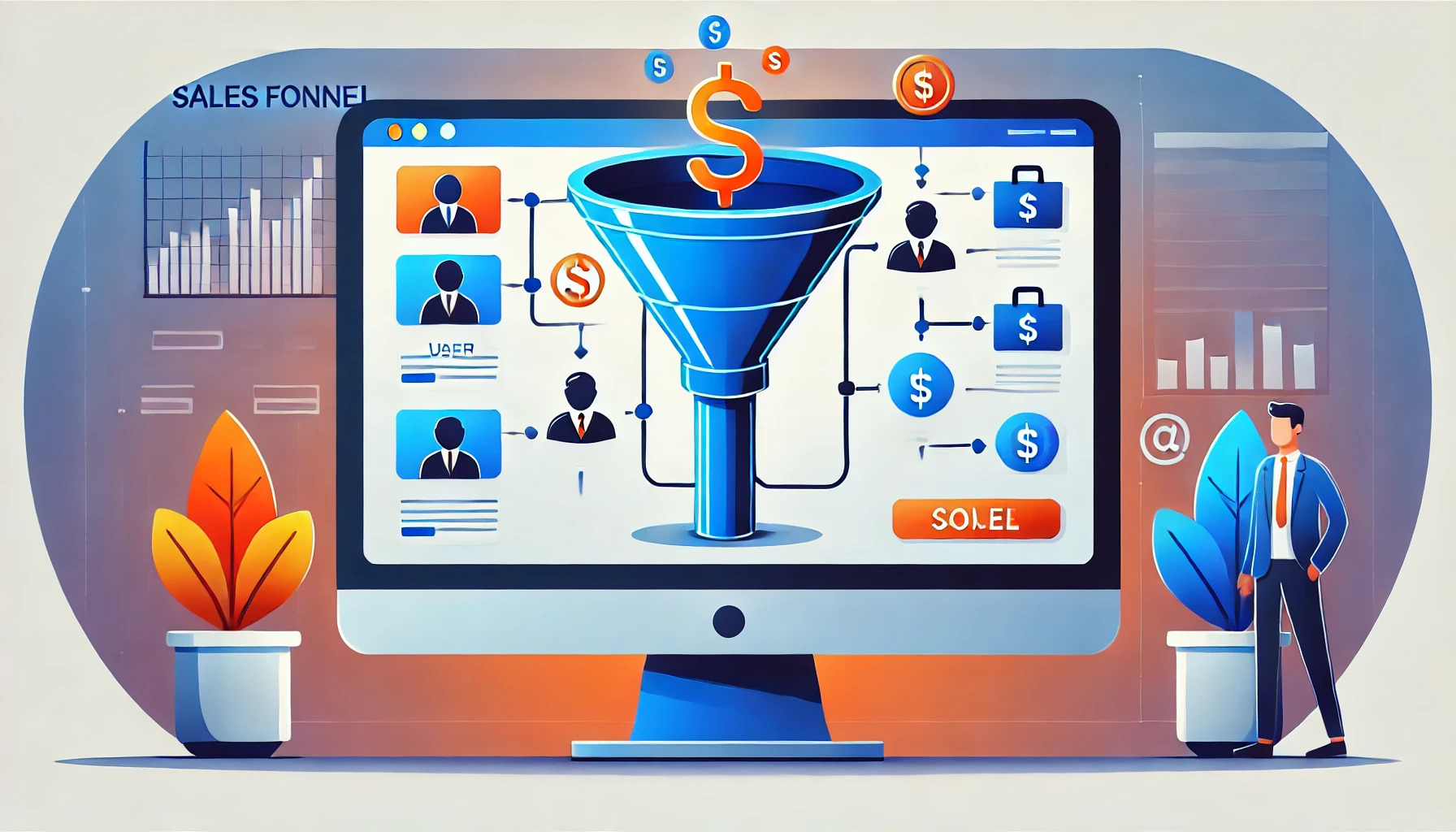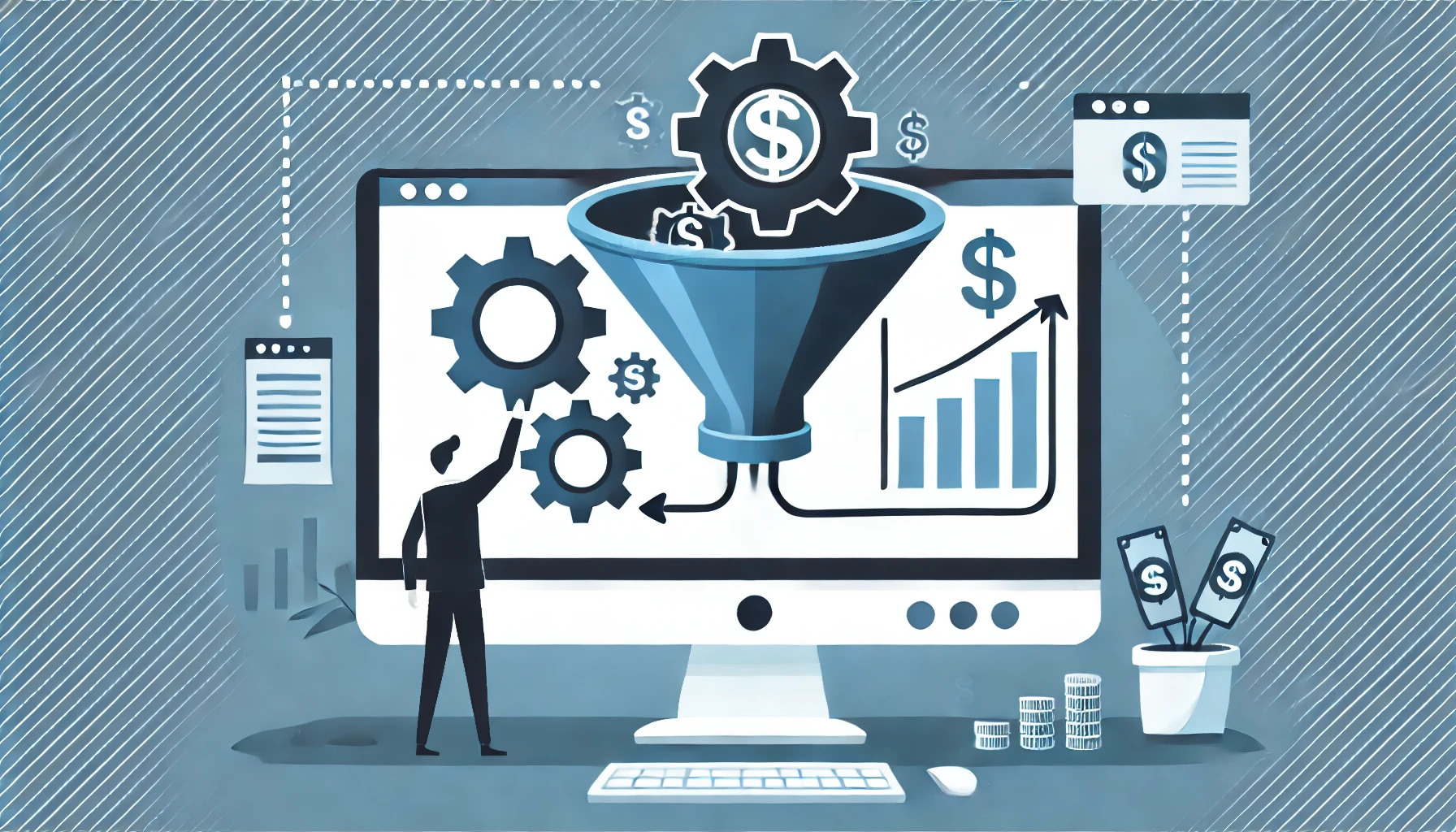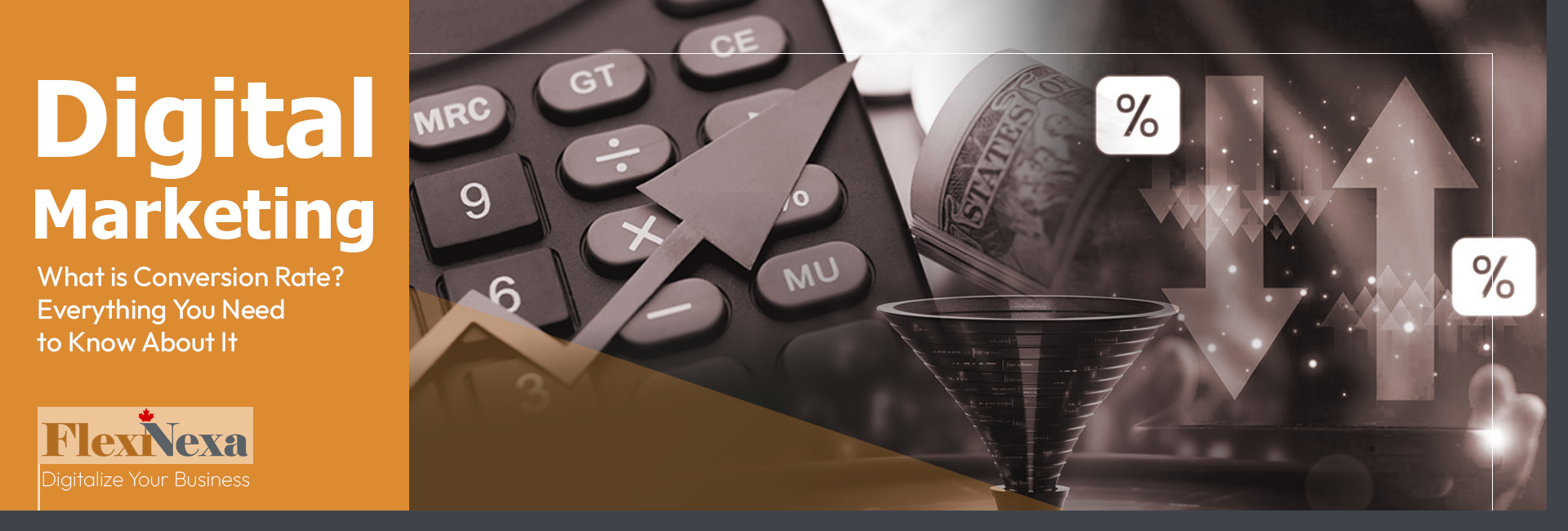Competition in the digital space is intensifying, and businesses need to employ the best strategies to improve website performance and increase their conversion rate. The conversion rate is one of the most critical metrics in marketing, directly linked to a business’s success in attracting and retaining customers. A deep understanding of this concept and how to optimize it can significantly impact the growth and development of businesses.

This article, produced by the Research and Development department of Flexinexa, aims to provide a comprehensive overview of the conversion rate and offer effective strategies for optimizing it. We will explore key concepts such as conversion rate, conversion optimization, conversion metrics, and their role in enhancing website performance and increasing user engagement. Additionally, we will examine the crucial role of conversion rate in the lead generation process and the sales funnel.
The purpose of this article is to provide comprehensive and practical information that can help businesses understand and optimize their conversion rate, guiding them toward greater success in the digital space.
What is Conversion Rate?
Conversion rate
refers to the percentage of website visitors who complete a desired action for the business. This action could include purchasing a product, signing up for a newsletter, or filling out a contact form. The conversion rate indicates how effectively a website turns visitors into customers or active users. The higher the conversion rate, the more successful the website is at persuading users to take the desired action.
Conversion rate optimization
refers to a set of strategies and techniques aimed at increasing the percentage of visitors who complete the desired action. This process involves various improvements to the website, such as simplifying the checkout process, increasing page load speed, enhancing user experience, and providing engaging content tailored to users’ needs. The goal of conversion rate optimization is to improve different elements of the website so that more visitors are converted into customers or active users.
Conversion metrics
are the data points and indicators used to measure and analyze the conversion rate. These metrics include the number of clicks on call-to-action buttons, cart abandonment rates, average time spent on the site, and the level of user engagement with website content. By closely examining these metrics, businesses can identify the strengths and weaknesses of their website and take necessary actions to improve their conversion rate.
![]()
how these concepts—conversion rate, conversion rate optimization, and conversion metrics—play a crucial role in improving website performance and increasing user engagement:
Conversion Rate and Website Performance
A higher conversion rate directly indicates that a website is effectively meeting its goals, whether that’s making sales, generating leads, or increasing sign-ups. By focusing on improving the conversion rate, businesses can ensure that their website is functioning optimally, attracting the right audience, and encouraging them to take the desired action.
Conversion Rate Optimization and User Engagement
Optimizing the conversion rate often involves enhancing the user experience, which leads to increased engagement. When users find a website easy to navigate, fast to load, and relevant to their needs, they are more likely to spend time on the site, interact with its content, and ultimately convert. This heightened engagement not only boosts the conversion rate but also strengthens the overall relationship between the business and its users.
Conversion Metrics and Continuous Improvement
Conversion metrics provide valuable insights into how users interact with a website and where improvements are needed. By regularly analyzing these metrics, businesses can identify specific areas that may be hindering performance, such as high cart abandonment rates or low click-through rates on call-to-action buttons. Addressing these issues leads to continuous improvements in both website performance and user engagement.
Examining the vital role of conversion rate in the process of generating sales leads and sales funnel
The conversion rate is one of the most critical key performance indicators (KPIs) in the process of lead generation and managing the sales funnel. It reflects the percentage of people who, after interacting with your business, take a specific action (such as making a purchase, signing up, downloading, etc.). The vital role of the conversion rate in this process can be examined from several perspectives:
Enhancing Lead Efficiency
The conversion rate helps measure the efficiency of the leads generated. By analyzing the conversion rate, you can determine which marketing channels or lead generation methods are most effective in converting visitors into customers. This information allows you to optimize resource allocation and focus on the channels that deliver the highest returns.
Improving Sales Funnel Management
The sales funnel includes various stages that a potential customer goes through, from initial awareness of the business to the final purchase. The conversion rate at each stage of the sales funnel indicates how many leads progress to the next stage. If the conversion rate is low at a particular stage, it signals issues that need to be addressed and improved.
Increasing Revenue
An increase in the conversion rate means more leads are being converted into customers, ultimately leading to higher sales and revenue. By optimizing the factors that influence the conversion rate (such as improving user interface, special offers, etc.), a business can significantly increase its revenue.
Measuring Marketing Efficiency
The conversion rate is an important metric for evaluating the effectiveness of marketing campaigns. By examining the conversion rate, you can determine whether your messages, offers, and promotional content are successfully attracting the target audience and converting them into customers. This insight allows you to refine your marketing strategies.
Reducing Marketing Costs
Improving the conversion rate means getting more value from each lead. By focusing on optimizing the conversion rate, you can reduce the cost of generating leads and, instead of merely increasing the quantity, emphasize the quality of the leads. This leads to a reduction in overall marketing expenses.
The conversion rate is a powerful tool in optimizing the lead generation process and managing the sales funnel. By analyzing and improving the conversion rate, businesses can enhance their performance in attracting new customers, retaining existing ones, and boosting profitability.
Calculate the size of the conversion rate.
Calculating the conversion rate is really simple and can help you understand how effective your marketing efforts have been. This rate shows you how many people, out of all those who interacted with your business (for example, by viewing an ad or visiting a webpage), actually took a specific action that is valuable to your business (such as making a purchase, signing up, or downloading something).
To make it clearer, let me give you a simple example. Imagine you placed an ad on social media that was seen by 5,000 people. Out of these, 250 people decided to click on the link in the ad and purchase your product. Now, to find out your conversion rate, you just need to divide the number of people who made a purchase (250) by the total number of people who saw the ad (5,000). In this example, your conversion rate would be 5%.
This percentage helps you understand how many people out of every 100 who saw your ad actually became customers. The higher this percentage, the more successful your campaign has been in attracting customers.

The conversion rate is important for several reasons:
Evaluating Marketing Campaign Effectiveness
The conversion rate shows how successful your marketing efforts have been in turning audiences into customers. This helps you identify and optimize the most effective campaigns.
Optimizing Resources and Costs
By analyzing the conversion rate, you can better allocate resources and reduce costs, as it reveals which marketing channels yield the highest returns.
Increasing Revenue
A higher conversion rate means more customers and increased revenue. Optimizing this rate directly contributes to greater profitability.
Identifying Weak Points
A low conversion rate in a specific area can indicate the need for improvements in design, content, or business processes.
Improving Customer Experience
Analyzing the conversion rate helps you enhance user experience and increase customer satisfaction, ultimately leading to greater customer loyalty.
Gaining a Competitive Edge
Improving your conversion rate helps you perform better in a competitive market, attracting more customers.
More Accurate Forecasting
The conversion rate is a crucial tool for predicting future business needs and planning sales strategies.

Characteristics of a good conversion rate
A good conversion rate has several key characteristics that indicate effective performance in attracting and converting customers. Here are some of the main features of a good conversion rate:
Above Industry Average
A good conversion rate should be higher than the average rate in your industry. This indicates that your business is performing better than competitors in converting visitors into customers.
Consistency Over Time
A good conversion rate should be stable over time, not just in the short term. Consistency in conversion rate means that your business strategies and tactics are continuously effective.
Alignment with Business Goals
A good conversion rate should align with your key business objectives. For example, if your primary goal is to increase sales, the conversion rate should directly lead to an increase in the number of sales.
Positive Return on Investment (ROI)
A good conversion rate should contribute to a favorable return on investment (ROI). This means that the costs associated with acquiring new customers are justified by the profits generated from conversions.
Ability to Attract Targeted Customers
A good conversion rate should indicate that your business is successfully attracting and converting targeted customers—those who are likely to become loyal and provide long-term value to your business.
Flexibility to Market Changes
A good conversion rate should be adaptable to market changes and shifts in customer behavior. This means that your business should be able to maintain a strong conversion rate even as the market evolves.
Responsiveness to Improvements
A good conversion rate should respond positively to improvements made in marketing strategies or website design. If the conversion rate increases after these changes, it shows that the adjustments were effective.
Leads to Increased Customer Satisfaction
A good conversion rate should go hand-in-hand with increased customer satisfaction. Customers who are converted should be happy with their purchase or experience, leading to loyalty and repeat business.
In conclusion, the conversion rate is one of the most important metrics for measuring success in any business. It reveals how effective your efforts have been in attracting and converting customers and shows how optimizing these processes can increase your business’s efficiency and profitability. By carefully analyzing the conversion rate, you can identify weaknesses, develop better strategies for targeting the right customers, and ultimately enhance customer satisfaction and loyalty. In a competitive market, improving your conversion rate can make a significant difference in your business’s success, helping you solidify your position and achieve long-term goals.
FAQ
- What is a Conversion Rate in Digital Marketing?
Answer:
Conversion Rate in digital marketing refers to the percentage of users who take a desired action after interacting with your website or online content. This action could be anything from making a purchase to signing up for a newsletter. A higher Conversion Rate indicates effective user engagement and successful lead generation.
- Why is Conversion Rate Important for Website Performance?
Answer:
Conversion Rate is crucial for evaluating your website’s performance because it directly measures how well your site converts visitors into customers or leads. Optimizing this rate can lead to better user engagement, higher revenue, and a more efficient sales funnel, making it a key metric in digital marketing.
- How Can I Improve My Conversion Rate?
Answer:
Improving your Conversion Rate involves Conversion Optimization strategies such as enhancing user experience, simplifying the checkout process, offering clear calls-to-action, and testing different website elements. Focusing on these areas can lead to better Conversion Metrics and overall website performance.
- What are Common Conversion Metrics to Track?
Answer:
Common Conversion Metrics to track include the overall Conversion Rate, bounce rate, average time on page, and click-through rate (CTR). These metrics provide insights into user behavior and help in identifying areas for Conversion Optimization.
- How Does Conversion Rate Impact Lead Generation?
Answer:
Conversion Rate is directly tied to Lead Generation as it measures how effectively your website turns visitors into potential customers. A higher Conversion Rate means more leads are entering your sales funnel, increasing the chances of conversions down the line.
- What is the Relationship Between Conversion Rate and Sales Funnel?
Answer:
The Conversion Rate is a key component of the sales funnel. It indicates how well each stage of the funnel is performing, from attracting visitors to converting them into customers. Optimizing the Conversion Rate at each stage can significantly improve the efficiency of your entire sales process.
- Why Should I Focus on Conversion Optimization?
Answer:
Focusing on Conversion Optimization helps you maximize the return on your marketing efforts by ensuring that more of your website visitors take desired actions. It leads to improved website performance, better user engagement, and ultimately, higher revenue.
- How Can I Measure the Success of My Conversion Rate Efforts?
Answer:
You can measure the success of your Conversion Rate efforts by analyzing changes in Conversion Metrics over time, such as an increase in sales, a reduction in bounce rates, or improved user engagement. Consistent monitoring and adjustment based on these metrics are key to long-term success.
- What Tools Can Help with Conversion Rate Optimization?
Answer:
Several tools can assist with Conversion Rate Optimization, including A/B testing software, analytics platforms like Google Analytics, and heatmaps. These tools provide data-driven insights that are essential for making informed decisions about website improvements.
- How Does User Engagement Affect Conversion Rate?
Answer:
User engagement significantly impacts Conversion Rate. The more engaged users are with your content, the more likely they are to take desired actions, such as making a purchase or signing up for a service. Enhancing user engagement through relevant content and intuitive design can boost your Conversion Rate.















